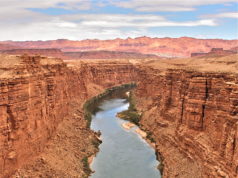MOUNTAIN VIEW, Calif. — The moon is a wet place, NASA
scientists announced Friday at a Mountain View, Calif., press conference,
unveiling their long-awaited analysis of a mile-high plume of debris kicked up
by the impact of the Lunar Crater Observation and Sensing Satellite.
“We saw real crystalline ice and lots of water vapor,
as well as other species,” such as sodium and perhaps even carbon dioxide,
methane, ethanol and sodium dioxide, said Anthony Colaprete, the principal
investigator for NASA’s Lunar Crater Observation and Sensing Satellite.
“It’s been a “Holy Cow!” moment every single
day since the impact,” as NASA’s analysis of the debris plume continues,
he said.
The discovery of ice and water vapor transforms our
perception of this celestial neighbor, long thought to be a dry and barren
place. By studying its characteristics, scientists say they’ll learn more about
the history of the orb and adjacent solar system. The water could also support
human exploration there.
For more than a decade, scientists have suspected the
presence of water at the base of the chilly craters, perpetually dark.
The mission, known as Lcross (pronounced L-cross), provides
confirmation. It slammed into a crater a month ago, excavating a 60-to-100-feet
wide hole — and kicking up at least 24 gallons of water into an elegant plume.
The satellite, built at Northrop Grumman’s facility in
Redondo Beach, Calif., and launched from NASA’s Kennedy Space Center in
Florida, was built to search for water. It is one of the first missions in NASA’s
plan to return humans to the moon and begin establishing a lunar outpost by
2020.
Its impact on October 9 seemed to be a dud. When it slammed
into the moon, there was no obvious sign of water; instead, the computer feed
went white — a blinding flash.
But its instruments recorded vast amounts of data.
Last week, a team of scientists gathered in NASA’s gray
low-slung building N-240 to analyze the data collected by spectrometers,
cameras that analyze the characteristics of the ejected components. The wavelengths
— just bumps and wiggles on a computer screen — matched the profile of a
oxygen-hydrogen molecule, or water.
“It was about 3 a.m. and we’d been working around the
clock,” recounted Colaprete. “Working through the data, I kept coming
back to that 1.4 micron feature,” suggesting water. “I kept coming
back to it, then sent out a post. They said, `It’s got to be real.”’
The rocket didn’t land on a frozen lake; rather, the water
seems to be mixed in with dust and other volatile chemicals.
While not as soggy as, say, Portland, “it’s wetter than
some deserts on Earth,” said Colaprete.
If the water is not too contaminated by toxic chemicals, it
could be drinkable, they said.
“We have all this new data to work through to learn
what the moon is telling us,” said team member Gregory Delory, senior
fellow of the Space Sciences Institute at University of California-Berkeley.
The next step, he said, is to learn where it came from and
how plentiful it is. Also: What are all those other chemicals?
“This is not your father’s moon,” said Michael
Wargo, chief lunar scientist for Exploration Systems at NASA Headquarters in
Washington D.C. “This is not a dead planetary body, but one with a lot of
dynamism in it. We are excited today for a lot of different reasons.”
Via McClatchy-Tribune News Service.














